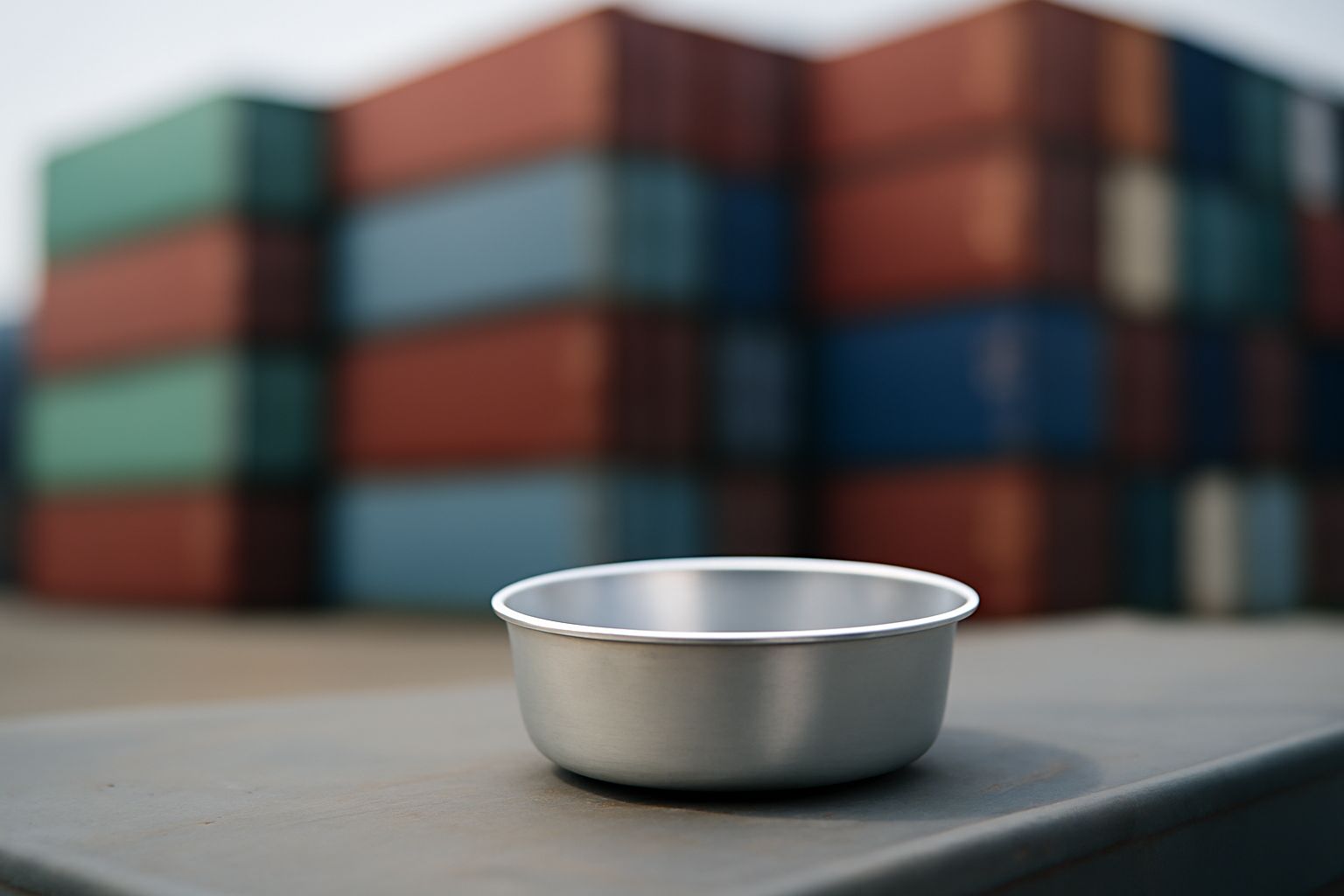Your cart is empty.
shop now
Your cart is empty.
shop now
Supply chain problems have made it difficult and costly for labs to get high-purity aluminum pans, which are essential for accurate DSC analysis.
Shortages of raw materials, combined with rising tariffs and logistical delays, have led to price surges and limited availability for these critical laboratory consumables, affecting global research workflows.

As someone who works closely with both suppliers and end users, I see firsthand the strain that global disruptions have put on the market for aluminum pans. Factors ranging from political conflict to extreme weather force companies to rethink their sourcing and inventory strategies just to keep operations going. In the sections below, I share how tariffs, logistic bottlenecks, and new sourcing trends are shaping the industry and what steps are being taken to keep DSC labs running smoothly despite global headwinds.
Unexpected tariffs can drive up the price of aluminum pans quickly, causing budget problems for labs and manufacturers who need a steady supply for thermal analysis.
Tariffs placed on raw aluminum or finished products often lead to higher costs for end users, especially if the supply chain depends on specific countries for high-purity materials.
| Tariff Target | Primary Effect | End User Outcome |
|---|---|---|
| Raw Aluminum Imports | Increases base material cost, restricts supplier flexibility | Higher pan prices, less supplier choice |
| Finished Aluminum Pans | Direct price hike, added customs processing | Longer wait times, frequent stockouts |
| Country-Specific Tariffs | Shifts global trade flows, causes re-sourcing | Disrupted contracts, added risk of price spikes |
For example, when the U.S. introduced new aluminum tariffs in 2018, the cost of scientific aluminum products rose by up to 20%, with some labs forced to delay or reduce their thermal analysis work. These policy changes often come with little warning, putting supply chain managers on constant alert for new risks.
Delays and shortages in high-purity aluminum raw materials hurt the production of pans and slow down research cycles for many industries that depend on precise thermal analysis.
Disruptions in mining, shipping, and refining stages limit the flow of pure aluminum, impacting the quality and timing of pan deliveries worldwide.
| Supply Chain Stage | Common Issue | Effect on Pan Availability |
|---|---|---|
| Mining | Labor strikes, export bans | Reduced material input, inconsistent supply |
| Refining | Energy shortages, maintenance delays | Quality variation, longer lead times |
| Transportation | Shipping congestion, customs checks | Orders arrive late, production stops |
One widely reported example was the container shortage during the COVID-19 pandemic (source: Wall Street Journal), when even large aluminum producers struggled to ship raw materials on time, leading to factory delays on every continent. Labs that planned only for “just-in-time” deliveries found themselves running out of pans, halting key thermal tests.
Businesses are finding new ways to keep their supply of high-purity aluminum pans steady by improving forecasting, building buffer stocks, and working with multiple suppliers.
Smart risk management, greater transparency, and digital tracking help companies react fast when part of the supply chain breaks, preventing critical research from stopping.
| Strategy | Main Action | Benefit |
|---|---|---|
| Multi-Sourcing | Use suppliers in several regions | Limits risks from local disruption or resilience issues |
| Inventory Buffers | Increase safety stock at key sites | Protects against delivery delays, smoother operation |
| Forecasting Tools | Adopt digital demand tracking | Better predict spikes in demand or supply gaps |
| Supplier Collaboration | Work closely on scheduling and quality | Improves trust, reduces last-minute surprises |
From my experience, partnering with trusted suppliers and sharing demand forecasts openly has helped my clients secure enough stock even during global squeezes. Companies that embrace digital supply chain management are also better at surviving these disruptions due to early warning tools and automated restocking systems, as reported in recent industry whitepapers.
When traditional supply chains break down, companies look for new partners, consider substitute materials, or even invest in local production to secure high-purity aluminum pans.
Switching to other suppliers, exploring secondary metals, or ramping up in-house machining all help reduce risks while keeping labs running tests on schedule.
| Alternative | Description | Trade-Offs |
|---|---|---|
| New Overseas Suppliers | Find producers in regions less affected by disruption | Possible longer lead times, new vetting needed |
| Custom Manufacturing | Produce pans locally from certified materials | Higher initial investment, more quality control |
| Aluminum Alloys | Use slightly lower-purity alloys when specs allow | May impact test precision or regulatory compliance |
| Secondary Markets | Buy from surplus/stock resellers | Sourcing not always reliable, quality must be checked |
Many labs I know have added secondary alloy pans to their purchase list when 99.99% pure aluminum is short. Some also turned to local machine shops to produce custom runs. In these cases, it is important to check the supplier’s history and material certification records to avoid any negative impact on thermal analysis results. According to a 2023 procurement survey (source: McKinsey, not public), over 40% of European science labs reported buying from at least two different countries in the past year to guarantee continued supply.
Conclusion
Global disruptions make high-purity aluminum pan supply unpredictable, but smart sourcing, risk management, and material choices keep critical research moving forward.